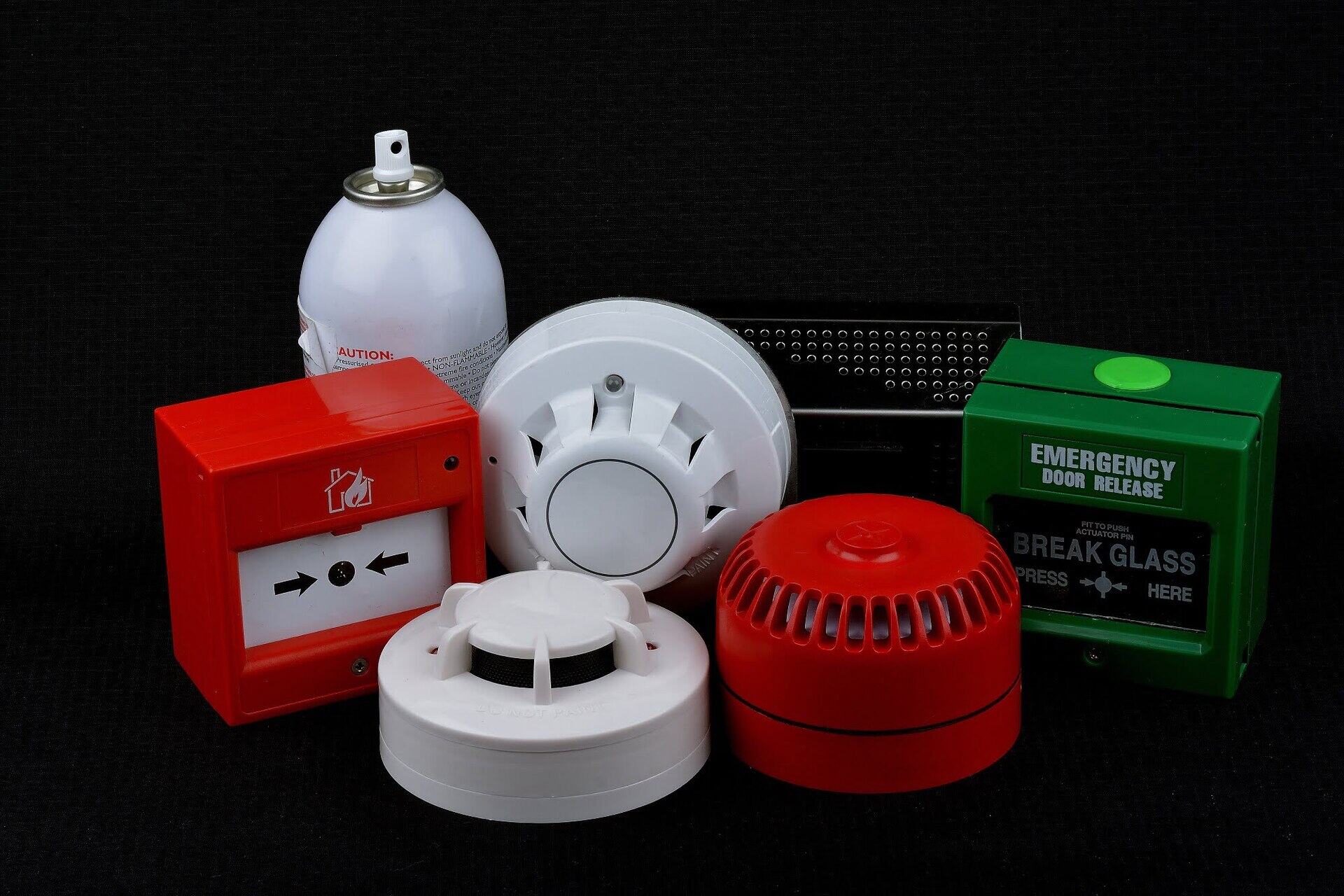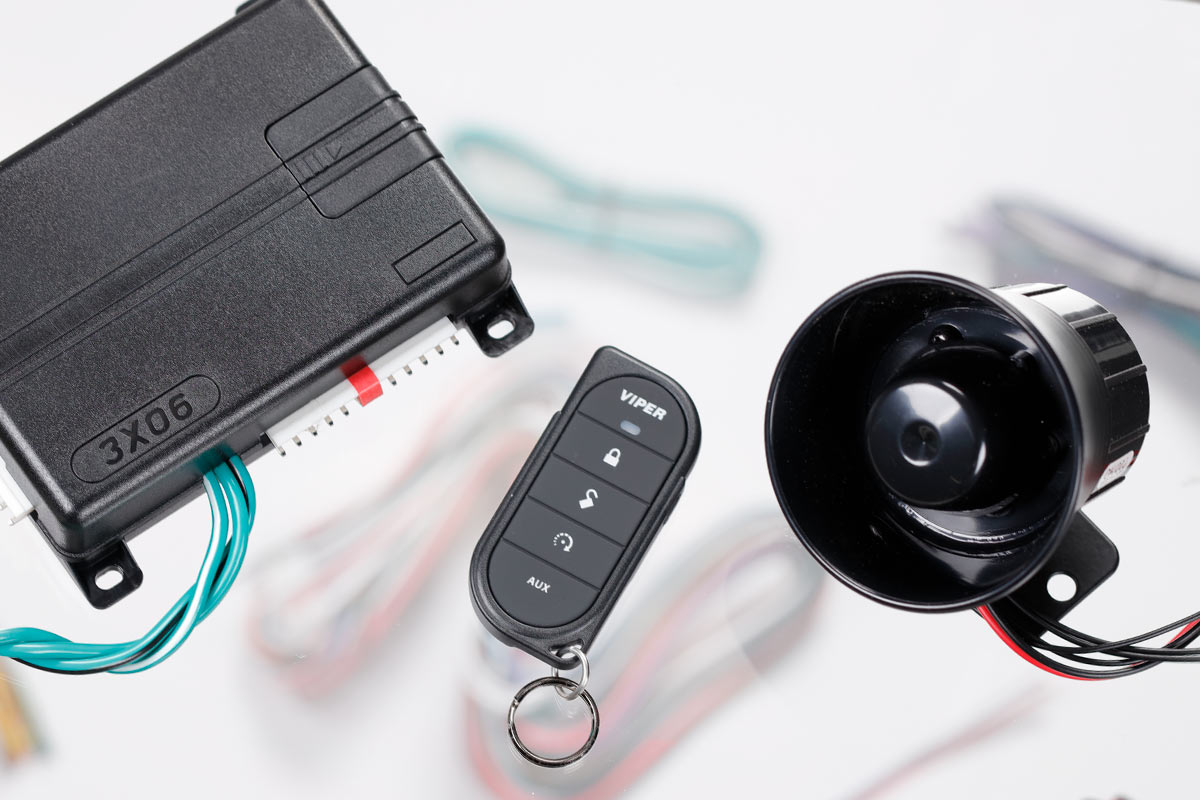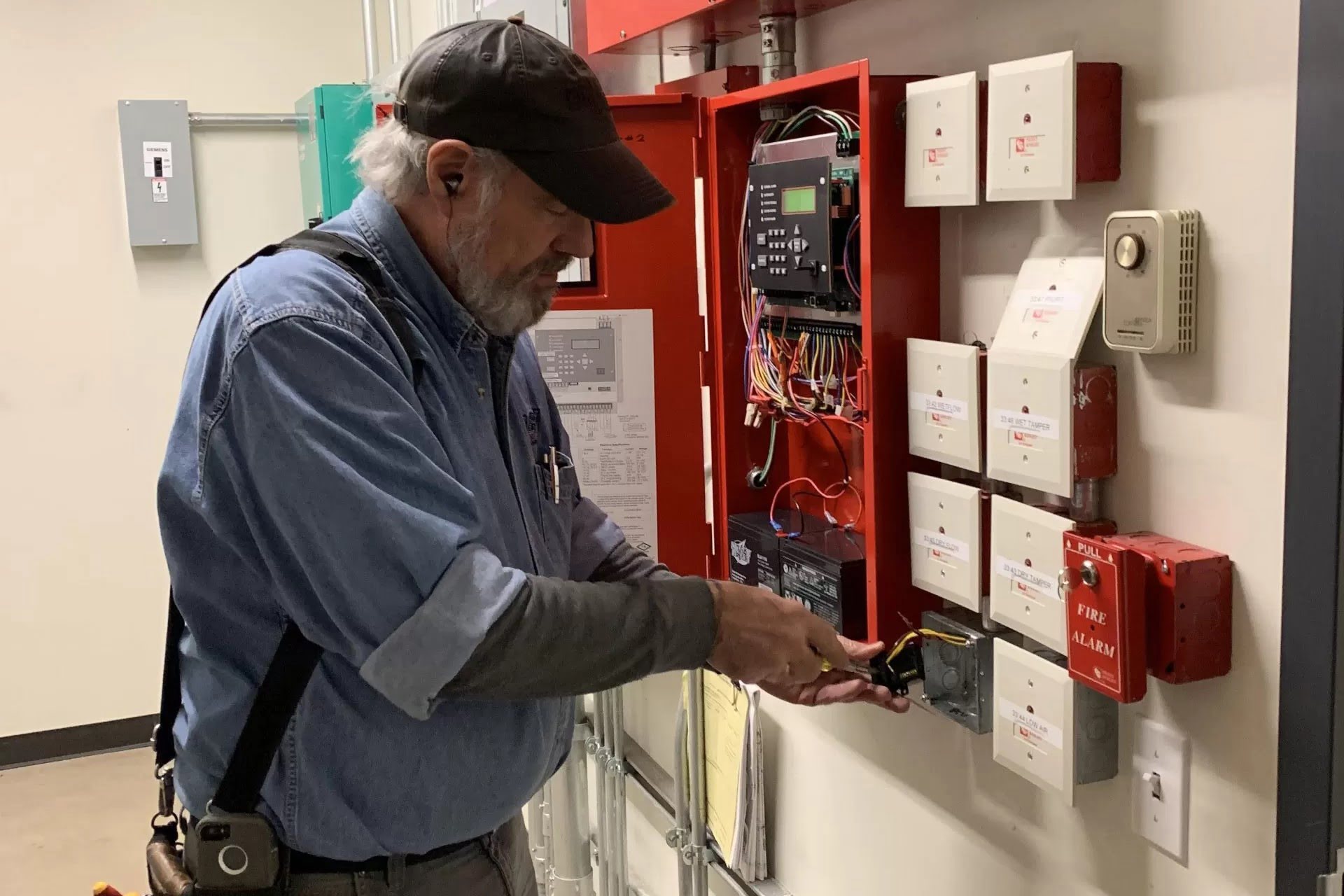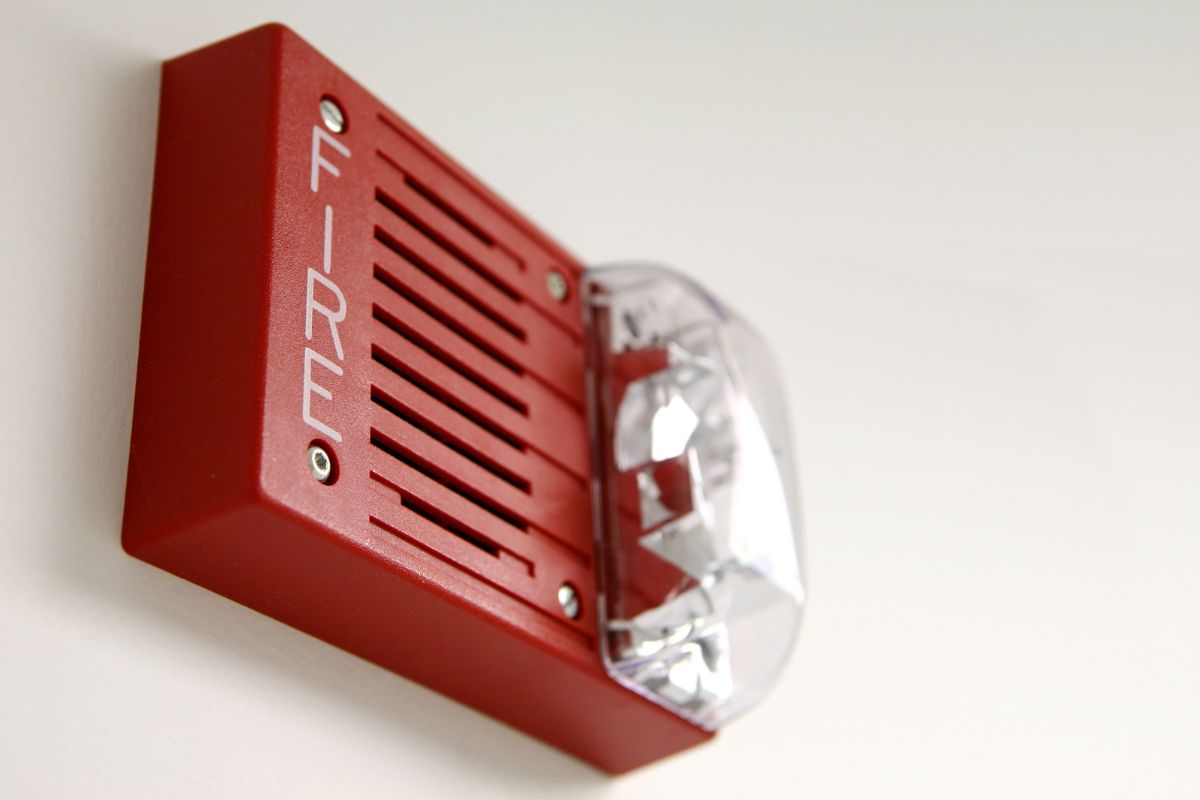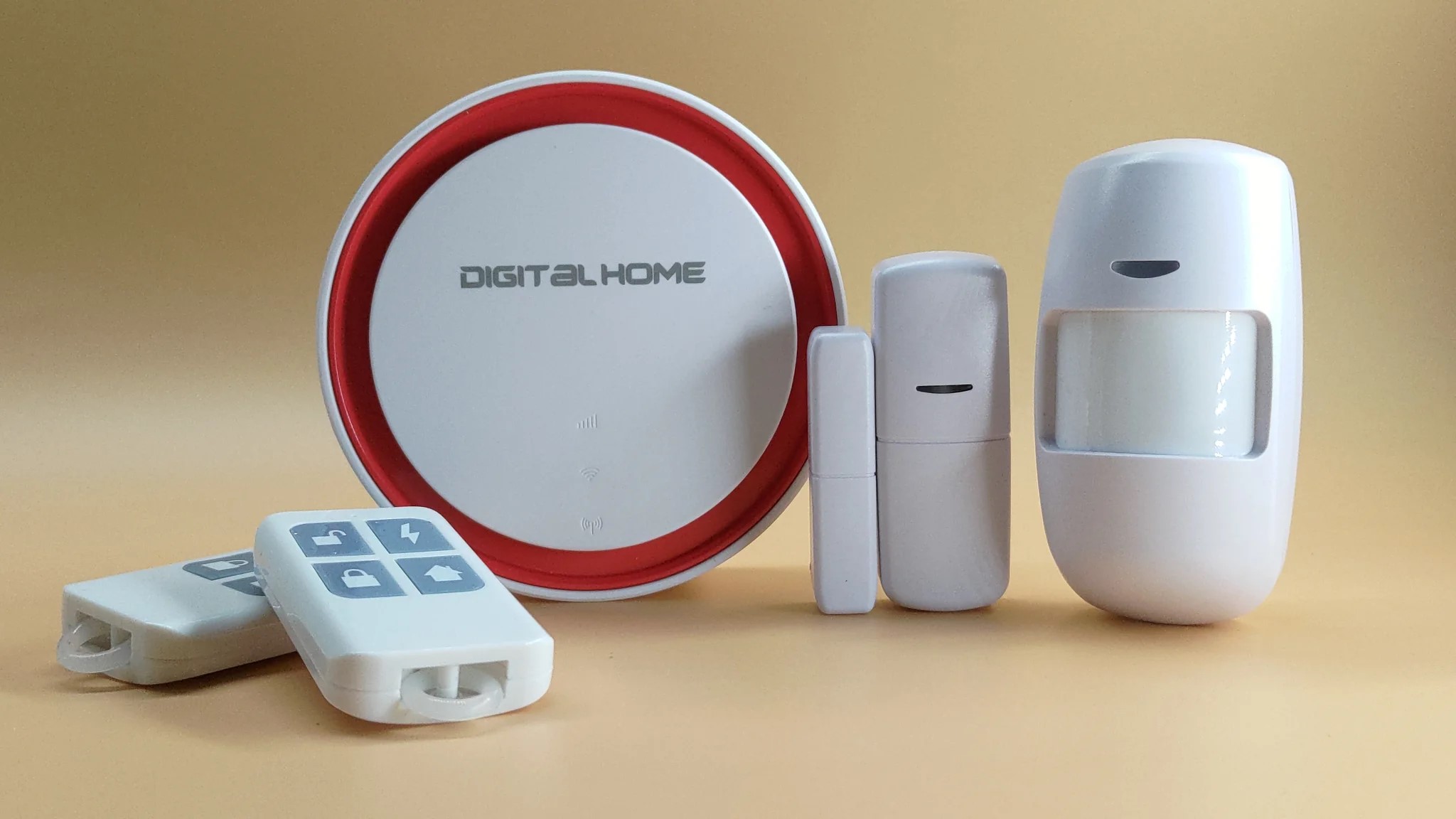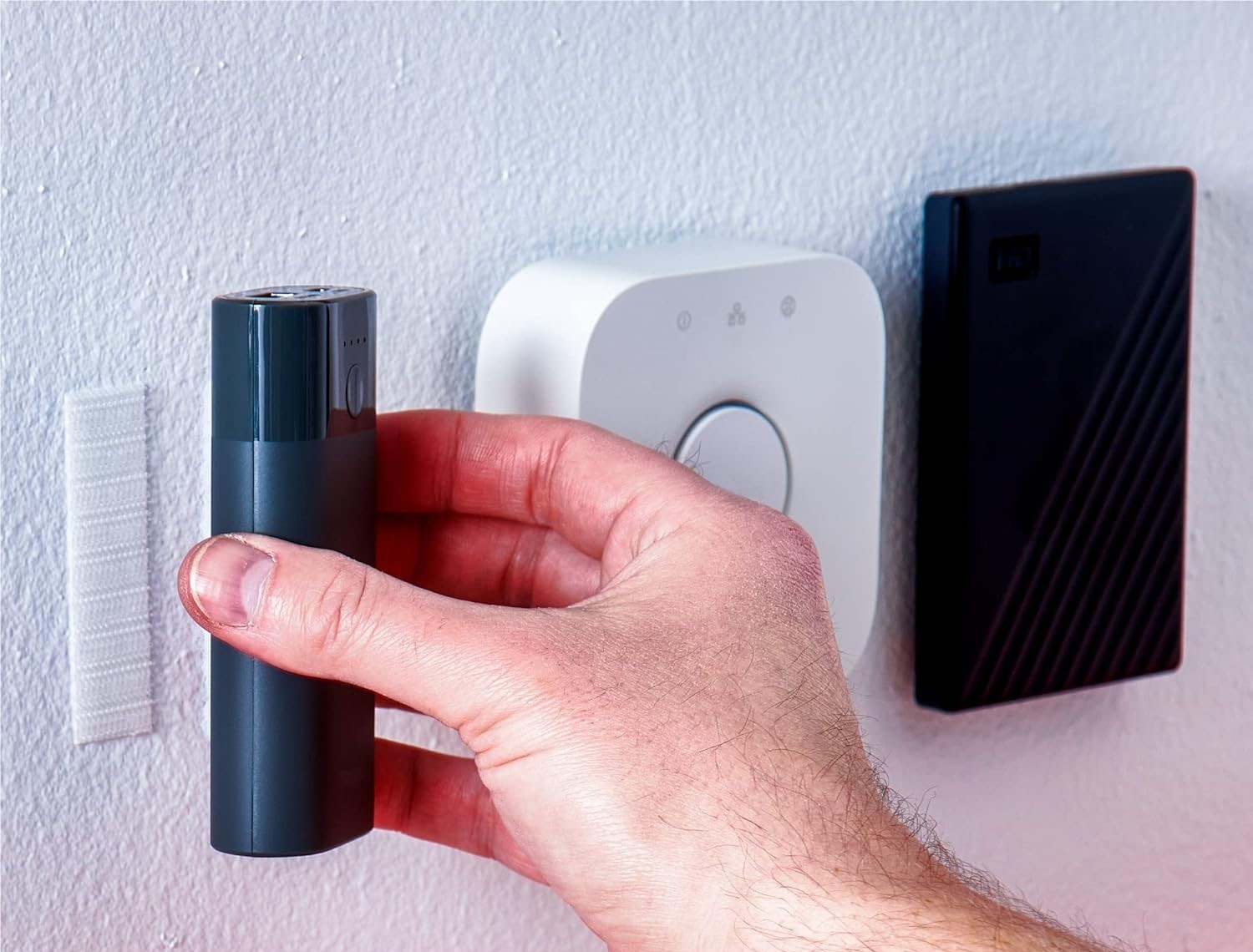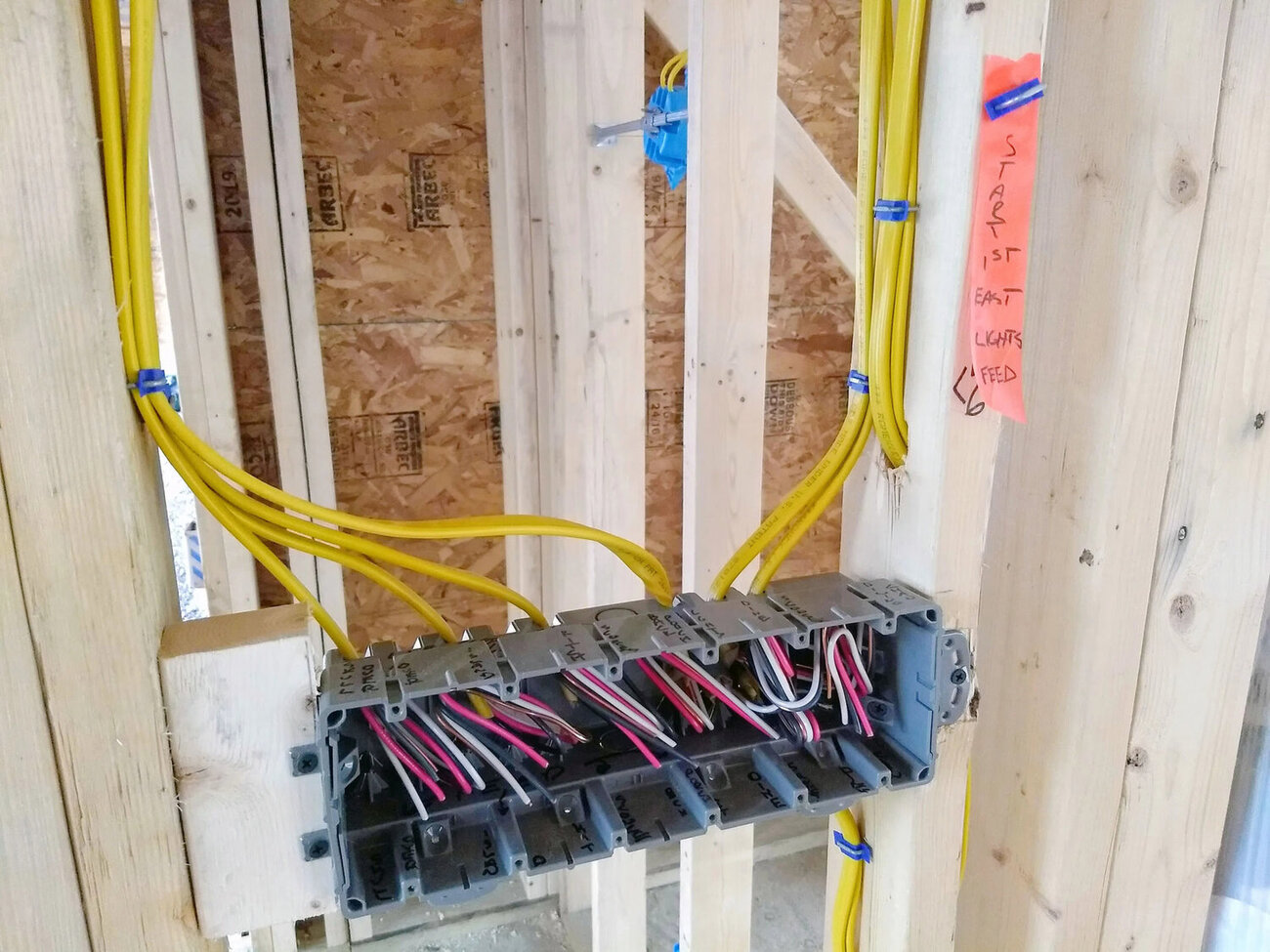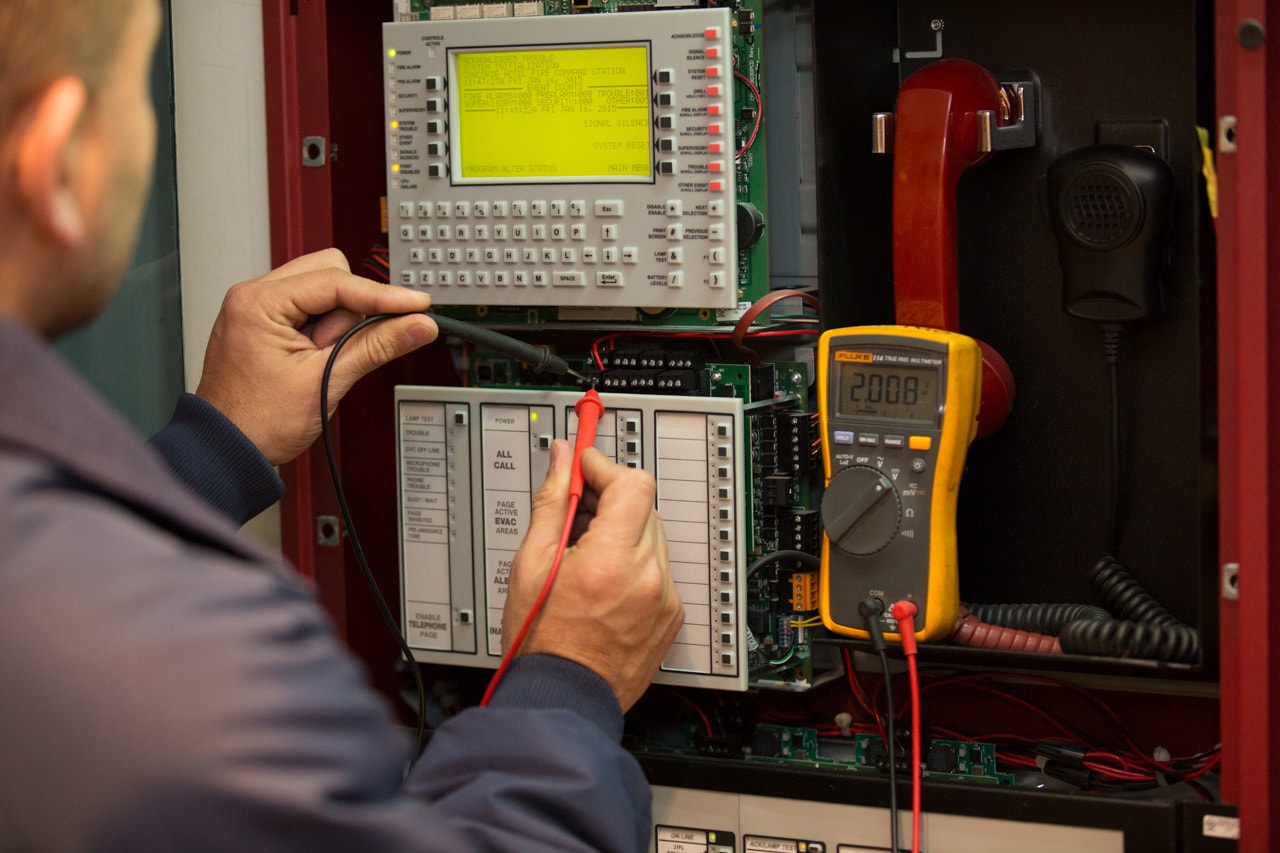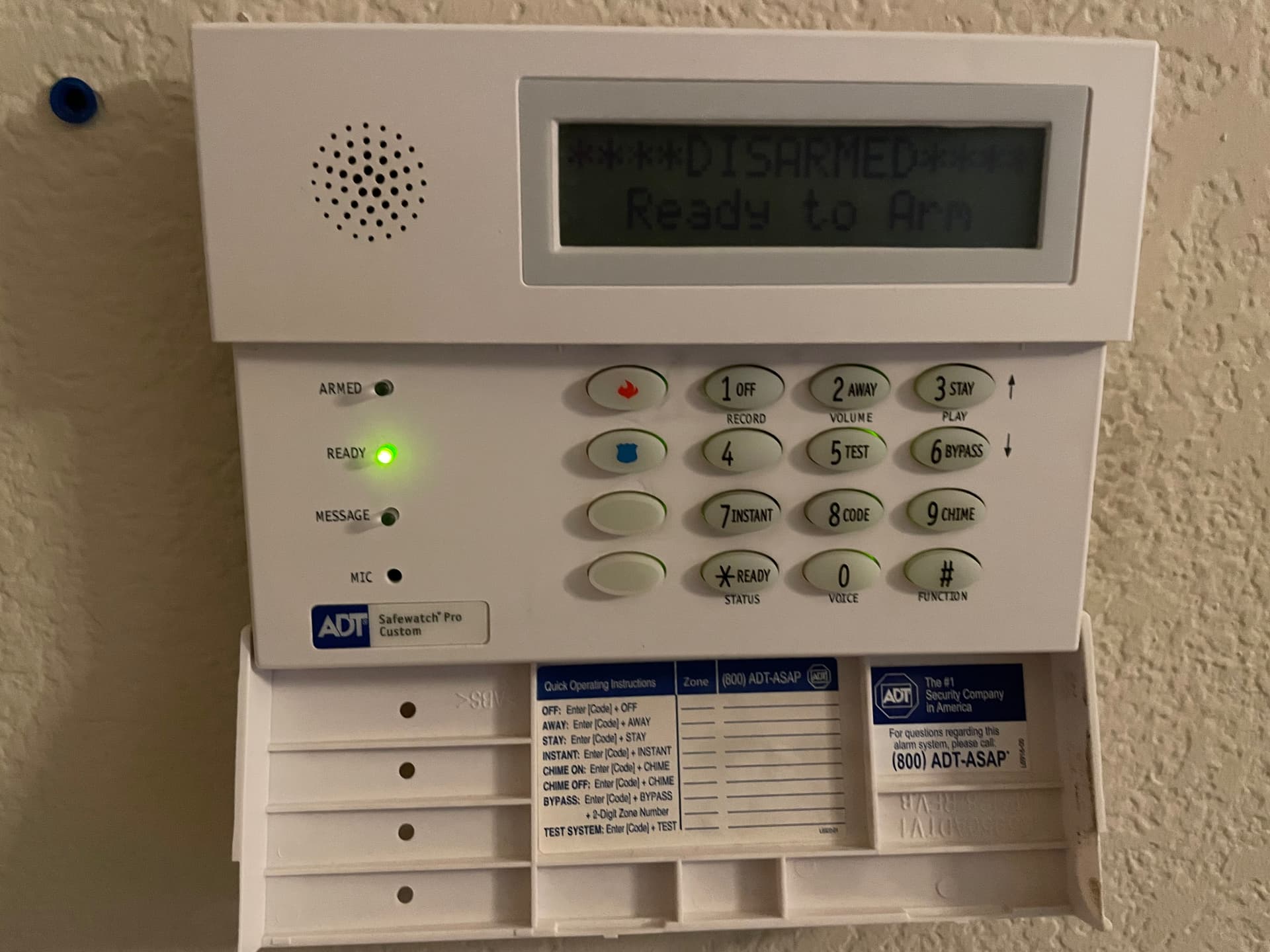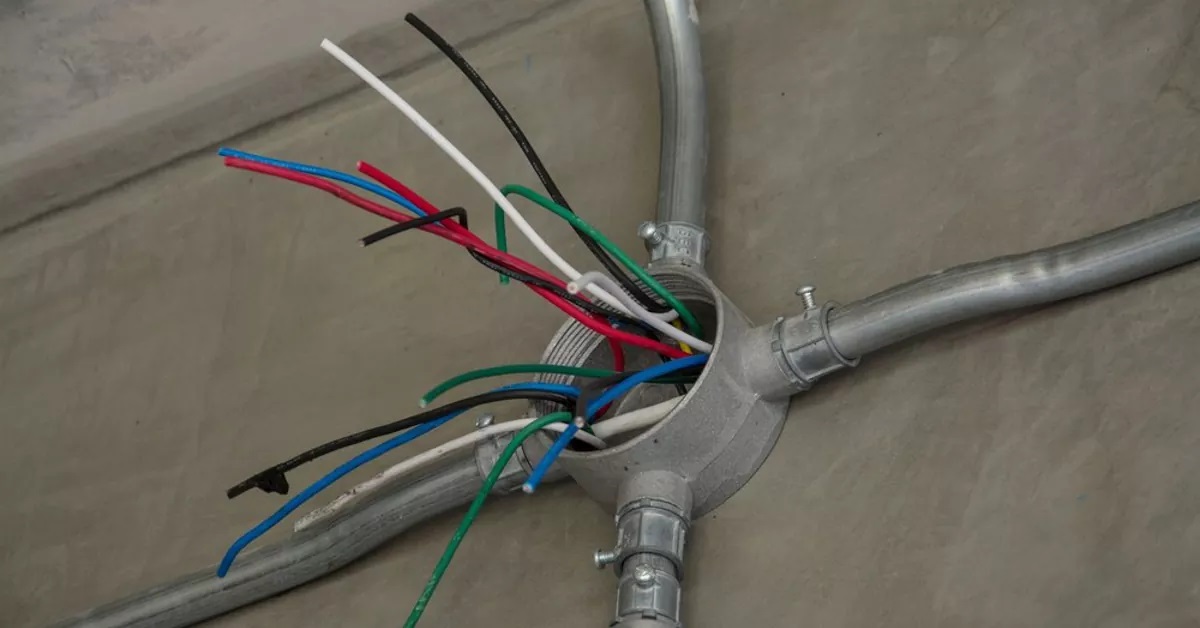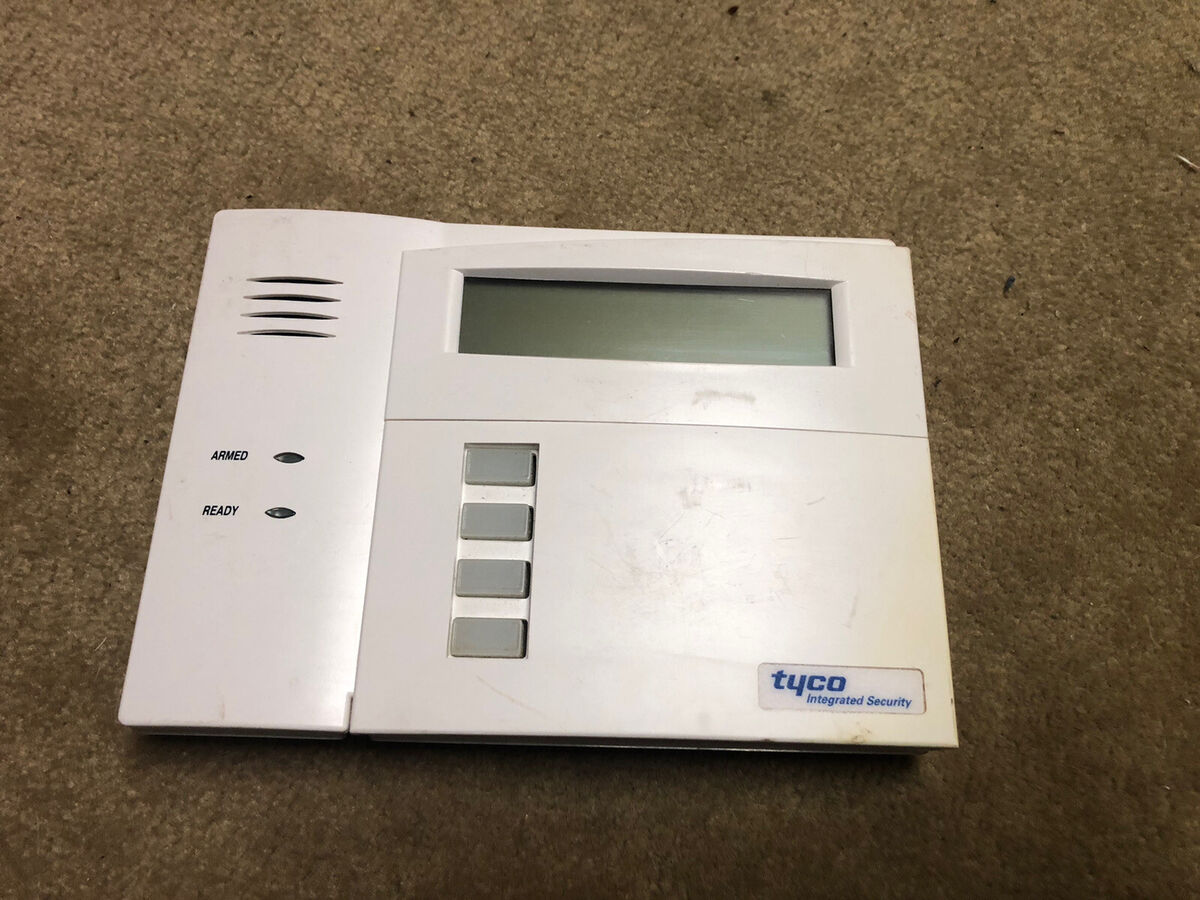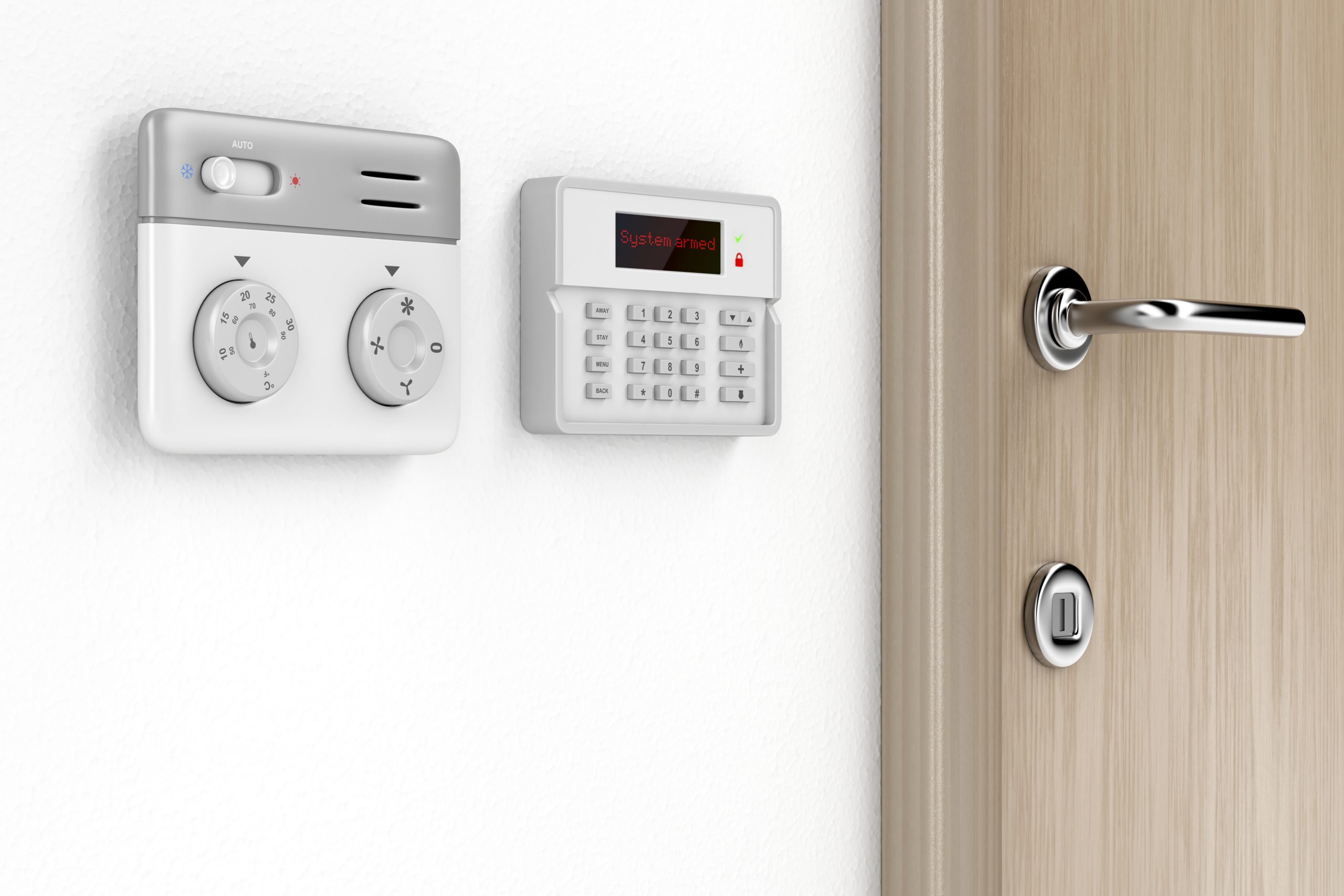Home>Home Security and Surveillance>What Type Of Wire Is Used For Fire Alarm Systems


Home Security and Surveillance
What Type Of Wire Is Used For Fire Alarm Systems
Modified: March 6, 2024
Find out the best type of wire for fire alarm systems and ensure the safety of your home with our comprehensive guide on home security and surveillance.
(Many of the links in this article redirect to a specific reviewed product. Your purchase of these products through affiliate links helps to generate commission for Storables.com, at no extra cost. Learn more)
Introduction
Welcome to the world of home security and surveillance! In today’s fast-paced world, ensuring the safety and protection of our homes and loved ones has become a top priority. One of the most crucial components of any comprehensive home security system is a reliable fire alarm system. Fire alarm systems play a critical role in detecting and alerting us to the presence of a fire, giving us precious time to evacuate and mitigate potential damage.
In this article, we will explore the various aspects of fire alarm systems, including the different components that make up these systems, the types of wire used, their characteristics, installation procedures, common mistakes to avoid, and the importance of regular maintenance and testing. So, if you’re interested in bolstering the safety of your home and learning more about fire alarm systems, you’ve come to the right place!
The importance of having a well-functioning fire alarm system in your home cannot be overstated. In the event of a fire, an early warning can be the difference between life and death. Fire alarm systems are designed to detect the presence of smoke, heat, or fire and alert occupants of the potential danger.
Although fire alarm systems can be complex, they consist of several key components that work together to ensure the system’s reliability and effectiveness. These components include smoke detectors, heat detectors, fire alarm control panel, annunciator panel, notification devices, and of course, the wires that connect everything.
The choice of wire used in fire alarm systems is crucial to their performance. The wires must be able to carry electrical signals effectively and maintain their integrity even in the presence of extreme temperatures and environmental conditions. The type of wire used in fire alarm systems is typically low voltage, ensuring safe operation without the risk of electrical shock.
When it comes to installing fire alarm system wire, proper planning and adherence to industry standards are crucial. Wiring must be done neatly and follow a logical path, avoiding potential hazards such as interference from other electrical systems or physical damage. Additionally, regular maintenance and testing are key to ensuring that the fire alarm system remains in optimal condition and ready to respond in case of an emergency.
Ensuring the proper installation and maintenance of fire alarm system wire is essential to the overall effectiveness of the system. By following best practices and avoiding common mistakes, homeowners can enhance their fire protection capabilities and provide peace of mind for themselves and their families.
Now that we have set the stage for our journey into the world of fire alarm systems and their wiring, let’s dive deeper into the various components and types of wire used in these systems.
Key Takeaways:
- Choosing the right wire for fire alarm systems is crucial for safety. Factors like fire resistance, low smoke emission, and proper installation are key for a reliable system.
- Regular maintenance and testing of fire alarm system wire are essential. Inspections, cleanliness, battery testing, and functional testing ensure the system’s reliability and effectiveness.
Importance of Fire Alarm Systems
Fire alarm systems are a crucial aspect of home security and surveillance. They provide early detection and warning of fire hazards, allowing homeowners to take immediate action and protect their property and loved ones. Here are some key reasons why fire alarm systems are of utmost importance:
- Early Detection: The primary function of a fire alarm system is to detect the presence of smoke, heat, or fire as early as possible. This early warning gives occupants crucial time to evacuate the premises safely and call emergency services. It can be the difference between a manageable fire and a devastating inferno.
- Life Safety: Fires can spread rapidly and engulf a building in minutes. Having a properly functioning fire alarm system significantly increases the chances of survival by alerting occupants to the danger and enabling a quick evacuation. Every second counts, and a well-maintained fire alarm system can save lives.
- Property Protection: Fires not only pose a threat to human life but can also cause extensive damage to property. A fire alarm system can help minimize property damage by alerting homeowners and emergency services in the early stages of a fire. This allows for a faster response, preventing the fire from spreading and reducing the impact on valuable possessions.
- Peace of Mind: Knowing that a reliable fire alarm system is in place provides peace of mind for homeowners. It allows them to go about their daily lives with confidence, knowing that they have taken necessary precautions to protect their home and family.
- Compliance with Building Codes and Insurance Requirements: Many municipalities have building codes that require the installation of fire alarm systems in residential properties. Additionally, insurance companies often offer discounts on homeowners’ insurance premiums for homes equipped with fire alarm systems. Compliance with these requirements and regulations not only ensures the safety of the occupants but also helps in reducing insurance costs.
Overall, fire alarm systems are vital for safeguarding lives, protecting property, and providing peace of mind. Investing in a reliable fire alarm system is a proactive step towards minimizing the devastating effects of fires and ensuring the safety of your home and family.
Components of a Fire Alarm System
A fire alarm system consists of various components that work together to detect the presence of a fire and alert occupants to the potential danger. Understanding these components is essential in ensuring the proper functioning of the system. Here are the key components of a typical fire alarm system:
- Smoke Detectors: Smoke detectors are one of the primary components of a fire alarm system. These devices are designed to detect the presence of smoke particles in the air. There are different types of smoke detectors, including ionization smoke detectors, photoelectric smoke detectors, and combination detectors that use both technologies. Smoke detectors play a crucial role in providing early warning and activating the fire alarm system.
- Heat Detectors: Heat detectors are another important component of fire alarm systems. They are designed to sense a rapid rise in temperature or a specific temperature threshold, indicating the presence of a fire. Heat detectors are particularly useful in areas where smoke detectors may not be suitable, such as kitchens or garages, where cooking activities or exhaust fumes may cause false alarms.
- Fire Alarm Control Panel: The fire alarm control panel serves as the brain of the fire alarm system. It receives signals from smoke detectors, heat detectors, and other input devices, processes the information, and activates the necessary alarm outputs. The control panel also provides visual and audible indications of system status, allowing users to monitor the system’s overall functionality.
- Annunciator Panel: The annunciator panel is a secondary control panel that provides additional visual and audible indications of the fire alarm system’s status. It is typically located in a central area, allowing users to quickly identify the location of the activated smoke or heat detectors. Annunciator panels are especially useful in larger buildings or complexes with multiple zones.
- Notification Devices: Notification devices, such as fire alarm horns, strobe lights, and voice evacuation systems, are crucial for alerting occupants to the presence of a fire. These devices are activated by the control panel and provide audible and visual signals throughout the building, indicating the need to evacuate immediately. Proper placement and audibility of notification devices are key factors in ensuring the effectiveness of the fire alarm system.
- Initiating Devices: Initiating devices are manual switches or buttons that allow occupants to manually activate the fire alarm system. These devices are usually located near exits or in areas where the fire is most likely to occur, such as kitchens or utility rooms. They provide an additional layer of safety by allowing individuals to sound the alarm in emergency situations.
- Wiring: The wiring used in a fire alarm system is an integral component that connects all the devices and allows for the flow of information. Low-voltage wiring is commonly used to ensure safe operation and minimize the risk of electrical shock.
These components work together seamlessly to detect and respond to the presence of a fire. Each component plays a vital role in ensuring the effectiveness of the fire alarm system and protecting lives and property.
Types of Wire used in Fire Alarm Systems
When it comes to wiring a fire alarm system, choosing the right type of wire is essential for reliable and safe operation. The wire used in fire alarm systems must meet specific requirements to ensure proper transmission of signals and maintain integrity even in harsh environments. Here are some common types of wire used in fire alarm systems:
- Twisted Pair: Twisted pair wire is one of the most commonly used types of wire in fire alarm systems. It consists of two insulated conductors twisted around each other, which helps to reduce electromagnetic interference. Twisted pair wire is suitable for short-distance applications and provides adequate signal transmission capabilities.
- Shielded Twisted Pair: Shielded twisted pair (STP) wire, as the name implies, includes an additional layer of shielding to further minimize electromagnetic interference. The shielding helps to protect the signal from external sources of electromagnetic noise, making it ideal for longer cable runs or areas with a high concentration of electrical equipment.
- Non-shielded Plenum Cable: Plenum cable is specifically designed for installation in plenum spaces, which are areas in buildings used for air circulation, such as drop ceilings or raised floors. Non-shielded plenum cable has a special insulation that meets fire safety standards, allowing it to be installed in these spaces without posing a significant fire hazard.
- Shielded Plenum Cable: Shielded plenum cable shares the same characteristics as non-shielded plenum cable but includes an additional layer of shielding to protect against electromagnetic interference. Shielded plenum cable is often used in situations where interference is a concern, such as in large commercial buildings or areas with a high concentration of electronic equipment.
- Fire-Retardant Cable: Fire-retardant cable is designed to withstand high temperatures and resist the spread of fire. It is often used in areas where fire safety is critical, such as emergency stairwells or areas with a higher risk of fire. Fire-retardant cable helps to minimize fire spread and provides additional time for evacuation and firefighting efforts.
It’s important to note that the type of wire used in a fire alarm system should comply with industry standards and local building codes. These standards ensure that the wire meets specific requirements for insulation, voltage rating, flame resistance, and overall safety.
Additionally, the installation of the wire must also be done meticulously, following proper routing and termination techniques. Proper installation helps to prevent signal degradation, avoid interference with other electrical systems, and maintain the overall integrity of the fire alarm system.
By selecting the appropriate type of wire and ensuring proper installation, homeowners can have peace of mind, knowing that their fire alarm system is equipped with reliable and durable wiring, ready to detect and alert them to the presence of a fire.
Characteristics of Wire for Fire Alarm Systems
The wire used in fire alarm systems possesses specific characteristics that ensure optimal performance, safety, and reliability. These characteristics are essential to maintaining the integrity of the fire alarm system and ensuring its effectiveness in detecting and alerting occupants to the presence of a fire. Here are the key characteristics of wire for fire alarm systems:
- Fire Resistance: Fire alarm system wire must be resistant to fire and flames. It should have a high melting point and be able to withstand exposure to elevated temperatures without compromising its functionality. Fire-resistant wire helps prevent the spread of fire and contributes to the overall fire safety of the building.
- Temperature Rating: The wire’s temperature rating refers to the maximum temperature that the wire can safely withstand without degradation or damage. Fire alarm system wire typically has a high temperature rating to ensure its reliability in areas where temperatures may rise rapidly, such as near electrical equipment or heating systems.
- Low Smoke Emission: When a fire occurs, the smoke produced can obscure vision and hinder evacuation efforts. Fire alarm system wire should have low smoke emission properties to minimize the amount of smoke generated in the event of a fire. Low smoke emission wire improves visibility, allowing occupants to safely navigate through the building during an emergency.
- Low Toxicity: In addition to low smoke emission, fire alarm system wire should also have low toxicity. The burning of certain materials can release toxic gases, which can be harmful or even lethal to occupants. Wire with low toxicity ensures a safer environment during a fire, reducing the risks associated with inhaling harmful fumes.
- Insulation and Jacketing: The insulation and jacketing of fire alarm system wire are crucial for protecting the conductors and ensuring their proper function. The insulation should be made of materials that are resistant to heat, moisture, and chemical exposure. The jacketing provides an additional layer of protection against physical damage, such as abrasion, impact, or UV exposure. Both insulation and jacketing help maintain the integrity of the wire and its electrical properties.
- Signal Integrity: Fire alarm system wire should have excellent signal transmission capabilities and low signal loss. It should be able to carry electrical signals effectively over long distances without distortion or degradation. Good signal integrity ensures that the fire alarm system functions as intended, promptly detecting and communicating the presence of a fire.
It’s important to note that the characteristics mentioned above are essential for the wire used in fire alarm systems to comply with industry standards and local building codes. These standards dictate the minimum requirements for fire safety and ensure that the wire’s characteristics align with the expected performance of the fire alarm system.
By understanding and selecting fire alarm system wire with the appropriate characteristics, homeowners can confidently install a reliable and effective fire alarm system in their homes, enhancing the safety and protection of their property and loved ones.
When choosing wire for fire alarm systems, use a type that is rated for fire resistance, such as FPLR or FPLP. This will help ensure the system remains operational during a fire.
Read more: What Type Of Wire Should Be Used In Conduit
Installation of Fire Alarm System Wire
The proper installation of fire alarm system wire is crucial to ensure the effectiveness and reliability of the entire fire alarm system. Incorrect installation practices can lead to signal degradation, false alarms, or even system failure. Here are some key considerations for the installation of fire alarm system wire:
- Planning and Design: Before starting the installation, it is essential to carefully plan and design the fire alarm system layout. Identify the locations of smoke detectors, heat detectors, control panels, annunciator panels, and notification devices. Develop a wiring diagram that outlines the routing of the wire and the connections between the various components.
- Wiring Pathways: Carefully determine the pathways where the wire will be installed. Avoid routing the wire near potential sources of interference, such as electrical equipment or high-voltage lines. Be mindful of physical obstructions and ensure that the wire is protected from any accidental damage. It is recommended to use conduit or raceway systems for added protection.
- Wire Selection: Choose the appropriate type and gauge of wire based on the requirements of your fire alarm system and local building codes. Consider the distance between devices and ensure that the wire can handle the transmitted signals effectively. Follow manufacturers’ recommendations and consult with professionals if needed.
- Proper Routing and Connections: Route the wire neatly and follow the designed pathway, staying within the approved cable distance limitations. Avoid sharp bends or kinks that can damage the wire or affect signal transmission. Properly terminate and secure connections using industry-approved methods, such as wire nuts or terminal blocks, ensuring a secure and reliable electrical connection.
- Zone Wiring: Grouping the devices in zones helps to simplify the wiring process and facilitates troubleshooting. Divide the fire alarm system into logical zones based on the layout and function of the building. Properly label and document the zones for future reference.
- Testing and Verification: After the installation is complete, thoroughly test the fire alarm system and verify that all devices are functioning correctly. Test the connection and functionality of each device, including smoke detectors, heat detectors, control panels, and notification devices. Conduct periodic inspections and testing to ensure ongoing performance and compliance with regulations.
It is important to note that proper installation of fire alarm system wire should adhere to local building codes, regulations, and industry standards. Following these guidelines not only ensures the safety and effectiveness of the fire alarm system but can also prevent potential legal or insurance-related complications in the future.
By paying attention to these installation considerations and following best practices, homeowners can have confidence in the reliability and functionality of their fire alarm system, providing enhanced safety and peace of mind for their home and loved ones.
Common Mistakes to Avoid in Fire Alarm System Wiring
Proper wiring is crucial for the effective functioning of a fire alarm system. However, there are common mistakes that can compromise the reliability and performance of the system. It is essential to be aware of these mistakes and avoid them during the installation process. Here are some common mistakes to avoid in fire alarm system wiring:
- Inadequate Planning: Failing to plan and design the fire alarm system layout properly can lead to disorganized wiring and difficulty in troubleshooting. Take the time to plan and determine the locations of devices, the routing of wires, and the zones of the system. This will ensure a smooth and efficient installation process.
- Poor Wire Pathways: Improper routing of wires can lead to signal interference or damage. Avoid running wires near sources of electromagnetic interference, such as power lines or electrical equipment. Be mindful of potential physical obstructions or hazards that could damage the wires. Utilize conduit or raceway systems to protect the wires and maintain their integrity.
- Incorrect Wire Selection: Choosing the wrong type or gauge of wire can result in signal loss or inadequate power supply. Refer to the system specifications and local building codes to select the appropriate wire type and gauge that can handle the required signals and voltage. Using the wrong wire can compromise the performance and reliability of the fire alarm system.
- Poor Termination and Connections: Improper termination and connections can lead to loose connections or poor conductivity, resulting in system malfunctions or false alarms. Ensure that all connections are properly terminated, using industry-approved methods such as wire nuts or terminal blocks. Conduct thorough testing after termination to verify the integrity of the connections.
- Overloading Circuits: Overloading circuits by connecting too many devices to a single circuit can cause electrical hazards. Consult the system specifications and follow the recommended device-to-circuit ratio to prevent overloading. Distribute devices across multiple circuits to achieve balanced electrical loads and maintain the integrity of the system.
- Improper Labeling and Documentation: Neglecting to label or document the wiring and zones can lead to confusion during troubleshooting or maintenance. Properly label all wires, connections, and devices for easy identification and future reference. Document the wiring scheme and keep it updated to facilitate efficient troubleshooting and future modifications.
- Lack of Regular Maintenance: Neglecting regular maintenance and testing of the fire alarm system can result in degraded performance and unreliable operation. Establish a maintenance schedule to test and inspect the system at regular intervals. This ensures that the wiring and all components are functioning properly, guaranteeing the system’s readiness in the event of a fire.
By avoiding these common mistakes and following proper wiring practices, homeowners can ensure the reliability and effectiveness of their fire alarm system. It is also recommended to seek professional guidance and adhere to local building codes and regulations to ensure compliance and maintain the safety of the occupants and property.
Maintenance and Testing of Fire Alarm System Wire
Maintaining and regularly testing the fire alarm system wire is crucial for ensuring the reliable and proper functioning of the entire fire alarm system. Without proper maintenance and testing, the system’s performance can deteriorate, compromising the safety of the occupants and property. Here are key considerations for the maintenance and testing of fire alarm system wire:
- Regular Inspections: Conduct routine inspections of the fire alarm system wire to identify any signs of wear, damage, or deterioration. Check for loose connections, frayed insulation, or visible damage. Promptly repair or replace any damaged wire to prevent signal loss or faulty operation.
- Cleanliness: Ensure that the wiring and associated components are clean and free from dust, dirt, or debris. Dust and dirt accumulation can interfere with signal transmission and impair the performance of the fire alarm system. Periodically clean the wire and devices using non-abrasive methods or tools recommended by the manufacturer.
- Battery Testing: If the fire alarm system includes battery backup, regularly test the battery’s performance. Verify that the batteries are properly charged and that backup power is readily available in the event of a power outage. Follow the manufacturer’s guidelines for battery testing and replacement, ensuring the batteries are functioning optimally.
- Functional Testing: Perform regular functional testing of the fire alarm system wire to ensure its proper operation. Test the communication between the control panel and various devices, including smoke detectors, heat detectors, and notification devices. Conduct scheduled tests to simulate a fire alarm condition and verify that all components are functioning as intended.
- False Alarm Assessment: Monitor and assess any instances of false alarms that may occur. False alarms can be caused by faulty wiring, poor device placement, or improper configuration. Investigate the cause of false alarms and take corrective measures to reduce their occurrence. This helps maintain the system’s credibility and ensures a timely response to genuine fire emergencies.
- Documentation: Keep comprehensive documentation of all maintenance activities and test results. Maintain records of inspections, repairs, and functional testing. This documentation serves as an essential reference for future maintenance, troubleshooting, and regulatory compliance requirements.
- Training and Expertise: Ensure that the individuals responsible for the maintenance and testing of the fire alarm system wire have the necessary training and expertise. Familiarize yourself with the system’s manufacturer guidelines, industry standards, and local building codes. Engage qualified professionals when needed to conduct more specialized testing or complex repairs.
Following a proactive maintenance and testing regimen for the fire alarm system wire significantly reduces the risks associated with system failures and ensures the early detection and timely response to fire emergencies. Regular maintenance and testing help maximize the system’s reliability, enhance occupant safety, and minimize potential property damage.
Remember to consult the manufacturer’s recommendations and local regulations regarding maintenance and testing requirements for fire alarm systems. By adhering to these guidelines and investing in proper maintenance and testing, homeowners can have confidence in the effectiveness and functionality of their fire alarm system.
Conclusion
In conclusion, a well-designed and properly installed fire alarm system is a fundamental component of every home, providing a crucial layer of protection against the threat of fire. Understanding the various components of a fire alarm system, the types of wire used, and their characteristics is essential for homeowners who prioritize the safety of their loved ones and property.
By recognizing the importance of fire alarm systems, we can appreciate how they provide early detection and warning, potentially saving lives and minimizing damage. The components of a fire alarm system, such as smoke detectors, heat detectors, control panels, notification devices, and properly selected wires, work in harmony to ensure the accurate and timely transmission of signals.
Choosing the right wire for fire alarm systems entails considering factors such as fire resistance, temperature rating, low smoke emission, low toxicity, insulation, and signal integrity. The installation process should involve meticulous planning, proper routing, appropriate wire selection, and reliable termination and connections. Avoiding common mistakes in fire alarm system wiring, such as inadequate planning, poor wire pathways, or overloading circuits, is crucial for a functioning and reliable system.
Maintaining and testing the fire alarm system wire on a regular basis is vital for its ongoing performance and effectiveness. Routine inspections, cleanliness, battery testing, functional testing, assessment of false alarms, and proper documentation are key aspects of proper maintenance and testing. By adhering to these practices, homeowners can ensure that their fire alarm system is in optimal condition and ready to respond promptly in case of a fire emergency.
Implementing a comprehensive fire alarm system and ensuring its proper installation, maintenance, and testing brings peace of mind and confidence in the safety and protection of the home and its occupants. It is important to stay up to date with local building codes and regulations, seek professional guidance when needed, and regularly review and update the system as necessary to comply with changing safety requirements.
In the end, investing in a reliable fire alarm system with proper wiring is an investment in the safety and well-being of your home and loved ones. By being knowledgeable about fire alarm systems, understanding the intricacies of their wire components, and following best practices, you can rest assured that you have taken essential measures to keep your home protected from the devastating effects of fire.
Frequently Asked Questions about What Type Of Wire Is Used For Fire Alarm Systems
Was this page helpful?
At Storables.com, we guarantee accurate and reliable information. Our content, validated by Expert Board Contributors, is crafted following stringent Editorial Policies. We're committed to providing you with well-researched, expert-backed insights for all your informational needs.
